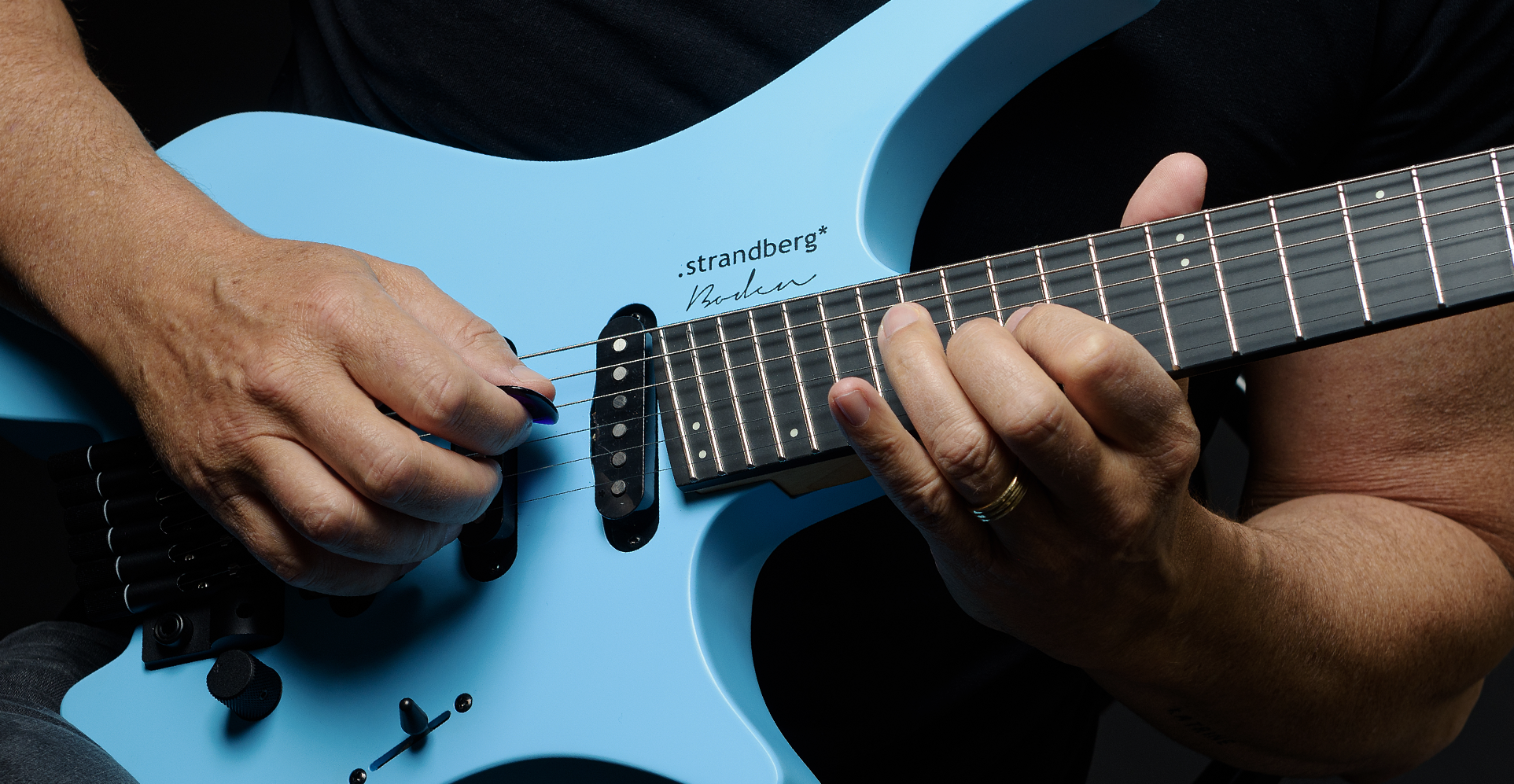A 12 MODULE COURSE WITH PERSONAL COACHING
A WORLD'S FIRST
TWELVE FULL MODULES - MASSIVE RESULTS
Limited Time Offer
THE CEILING YOU CAN’T BREAK THROUGH
HIT THIS WALL?
CAN’T KEEP FAST RUNS IN TIME
LOSING CONTROL WHEN YOU PLAY FAST
SPEED FEELS CHAOTIC, NOT MUSICAL
STRUGGLING TO LOCK IN SUBDIVISIONS
NO CLEAR METHOD TO FIX IT
It’s not your fingers, speed, or technique that’s the problem - it’s the complete lack of a system for mastering fast runs rhythmically.
This program builds that missing system from the ground up - and gives you total control over your speed, your phrasing, and your freedom to improvise at the highest level.
Watch the video above to learn more

THE HIGH-SPEED BREAKTHROUGH
Unlock effortless speed with hybrid picking & legato
Play in-time runs over arpeggios across the neck
Build blazing-fast phrases from simple practice loops
High speed improvising with triplets and duplets
Connect arpeggios with scale notes and chromatics
Know exactly what to practice to break the ceiling
LIMITED AVAILABILITY DUE TO 1-1 VIDEO COACHING
A TRUE BREAK-THROUGH COURSE
SIX HUGE Benefits of This SYSTEM
1. Master Blazing Fast In-Time Runs
Learn how to play ultra-fast 16th-note triplet runs that are actually in time. Not just a blur of notes - but rhythmically perfect, locked to the beat, and fully under control. This system trains you to predict exactly how your run will sound before you play it, eliminating stumbles and transforming your speed into real musical fluency.
2. Connect Arpeggios and Scales Across the Fretboard
Break free from boxed-in thinking. This program teaches you how to blend arpeggios and scale notes seamlessly across the entire neck - using the unique fretboard logic of the Changes system. You’ll never run out of options or get stuck in one shape again. Every area becomes a launchpad for melodic firepower.
3. Master All Four Diatonic Arpeggios Across the Neck
Major 7, minor 7, dominant 7, and minor 7♭5 - master them all at blazing tempos. You'll learn to run these core arpeggios up and down the fretboard using high-speed, legato-based triplet runs that push your technique and fretboard knowledge to the limit. This isn’t theoretical. It’s real-world, neck-wide command at top speed.
4. Build the Ability to Truly Improvise at Max Speed
This is the crown jewel: the power to improvise freely at your maximum speed. Not just play licks you’ve memorized, but actually create musical ideas on the fly, at tempo, without stumbling. You’ll internalize the sounds and movements so deeply that fast improvisation becomes as natural as speaking.
5. Hardwire the Hybrid Picking Legato Technique
This program is the ultimate training ground for developing insane hybrid picking legato speed. You’ll engrain this cutting-edge technique into your fingers through structured, high-speed runs and real musical examples. It’s the most powerful, efficient way to play and improvise at maximum speed - far beyond what traditional picking or legato alone can deliver. Once it's in your hands, your speed ceiling disappears.
6. Works Incredibly for Jazz, Fusion, Blues, and Rock
Whether you're aiming for the sophistication of jazz, the complexity of fusion, the grit of blues, or the aggression of rock - this system fits right in. The techniques, arpeggio shapes, and rhythmic tools you’ll master are genre-flexible, making you a more complete and dangerous improviser in any style.
THE ELEMENTS OF MASTERY
A FOUR level SYSTEM
Each Part Builds Upon The Previous To Create The Ultimate Master Skill

Cutting-Edge Insights on Perfecting the Technique
Precision Engineering for Blazing Fast Runs
Learn exactly what it takes to play insanely fast legato runs - in time and under control. This section gives you my latest strategies for building flawless speed and precision without stumbling.

Train Around a Single Shape - Master the Entire Fretboard
The Arpeggio Loop Method
Using just one arpeggio shape per chord type, you’ll train with tight practice loops that combine scale tones, chromatics, and technique - all within the Changes system. These loops form the engine behind high-speed control and full fretboard mastery.

Build and Automate Massive 8-Bar Triplet Runs
The Composed Run Blueprint
Take your loop ideas and turn them into long, pre-composed runs across the neck. These become your templates for navigating arpeggios at high speed and the ultimate drills for timing, technique, and structure.

Improvise at Your Max Speed, Without Stumbling
The Improvisation Engine
Now it’s time to use everything. You’ll learn to improvise triplet runs at full speed - on the fly, without getting lost - through highly effective exercises that lock in your technique and creative reflexes.
A TWELVE WEEK COURSE WITH PERSONAL COACHING
ANOTHER LEVEL OF LEARNING
Online video lessons in combination with 1-1 personal video coaching gives you the best of both worlds. Post and receive questions through our video app directly from your smart phone.
NB: BECAUSE WE WANT TO MAKE SURE EVERYONE RECEIVES THE FOCUS & TIME THEY NEED THIS COURSE HAS LIMITED AVAILABILITY


YOUR QUESTIONS ANSWERED
FAQ
If you have any questions that are not answered here, please do not hesitate to send me an email by using the contact form.
When does the course start and finish?
It is a completely self-paced online course - you decide when you start and when you finish. The first module is available monday.
DOES THE VIDEO FEEDBACK OPTION RUN OUT?
No. You can ask any question regarding this course for as long as you need. There is no deadline so you don't have to jump into the course right now. You can do everything at your own pace.
What if I am unhappy with the course??
If you are not excited about your purchase and the progress you made, contact us in the first 30 days and we will give you a full refund - No questions asked.
WHAT LEVEL OF SKILL IS THIS FOR?
Since 99% of all guitar players struggle with this area to some degree, this is for everyone. It's perfect for soloing beginners and intermediates and advanced players who's looking for that extra edge.
HOW BIG IS THE OVERLAP WITH OTHER COURSES?
This course is a completely new approach to fast soloing so there isn't any overlap with previous courses on guitarmastery.net. The only common theme is that rhythm and technique is involved.
IS THIS A 4THS TUNING COURSE?
No. You can use standard tuning or you can tune in perfect fourths. It has very little relevance to this course and when ever it is relevant, both will be taught in this course.

